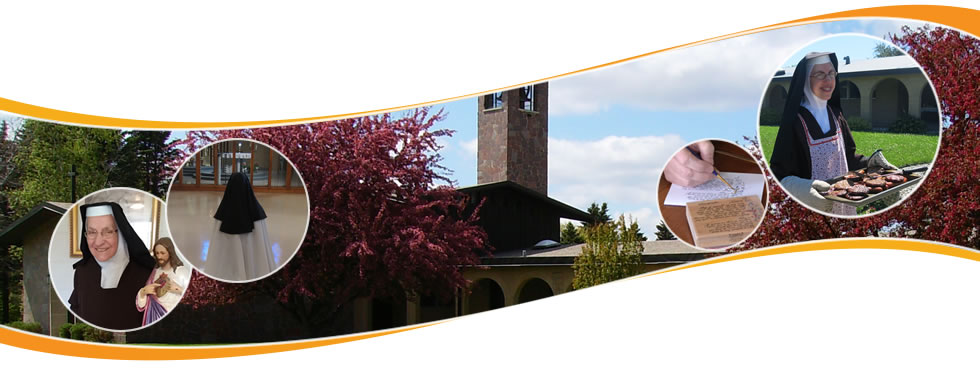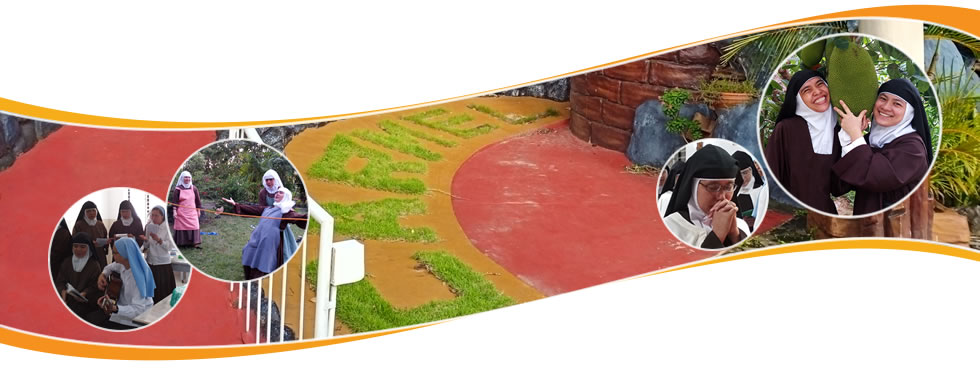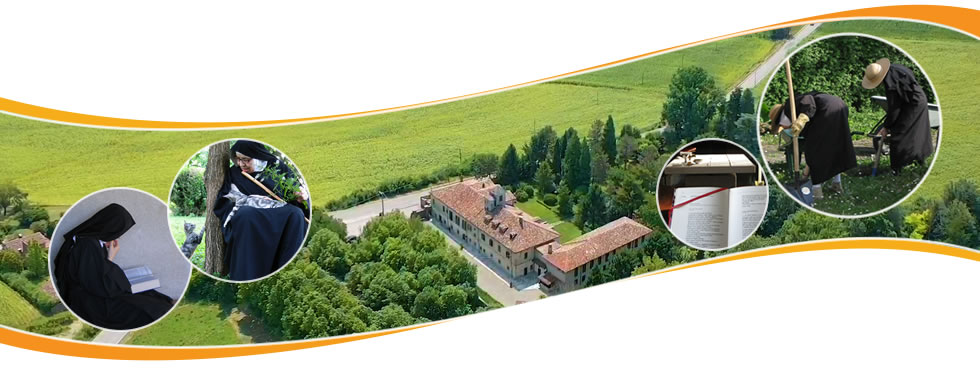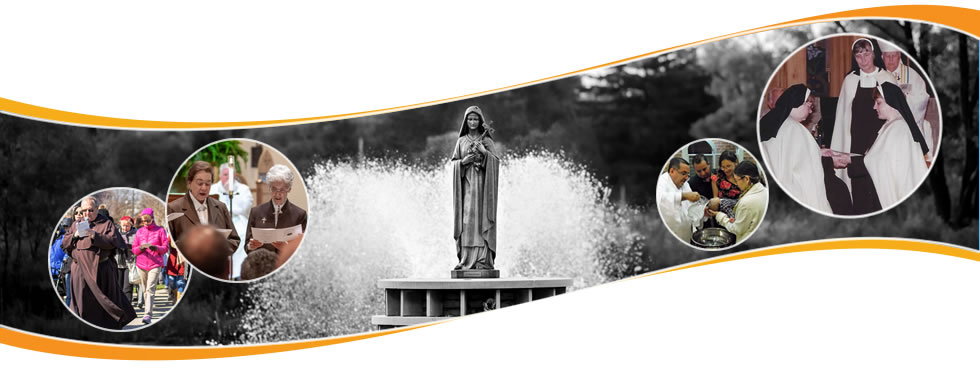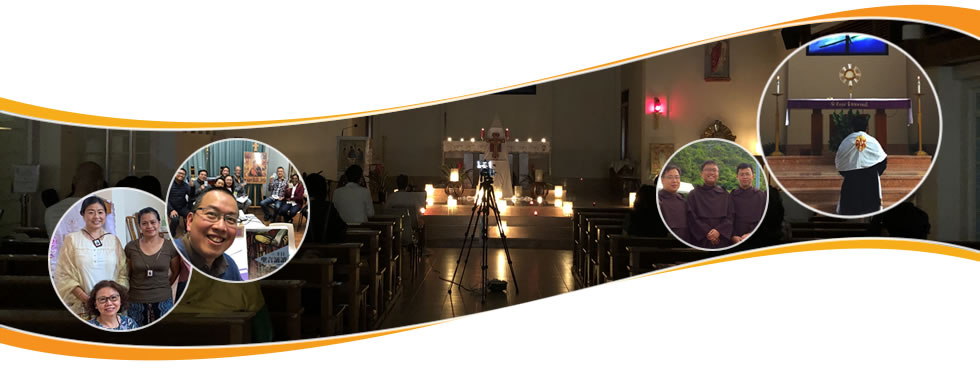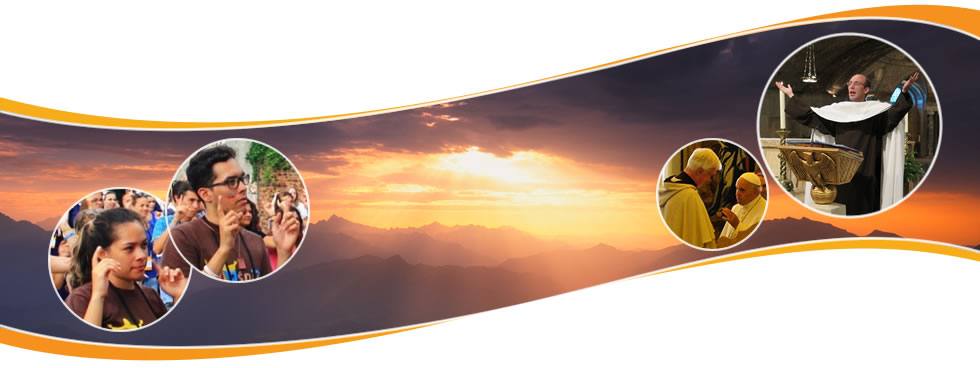The Institute of Spirituality in Asia (ISA) in cooperation with the Order of Carmelites-Philippine Province and the Institutum Carmelitanum (Rome) organized a Summer Course for 2017 on the “Life and Spirituality of St. Maria Magdalena de Pazzi” at the Institute of Formation and Religious Studies (IFRS) Audio-Visual Room from April 20 to 22.
In welcoming the 50-plus participants, Fr. Rico Ponce, O.Carm, Ph.D., noted how St. Maria Magdalena de Pazzi (1566-1607) is a great Carmelite mystic who can assist us in our spirituality but who is described by Fr. Fernando Millan Romeral, Prior General of the Order of Carmelites, as poorly understood.
Fr. Romeral was at the Mass for the saint’s 450th birth anniversary April 2, 2016 at the monastery of Careggi in Florence, Italy where her body is venerated. He was among the concelebrants led by Cardinal Archbishop Giuseppe Betori of Florence, her birthplace. 
St. Maria Magdalena de Pazzi is being honored worldwide, said Fr. Ponce, including by conferences in Italy, Brazil and the Philippines “so as to deepen our knowledge of our sister, find connections to ourlives and, above all, to disseminate what we discover not only within the Carmelite family but also within the Church community in which we live.”
Fr. Ponce recalled being present of the meeting of the Institutum Carmelitanum of the Carmelite Order and was asked to organize a conference on the “Life and Spirituality of Sta maria magdalena de Pazzi” for the Carmelite Family in Asia.
“I was referred to Fr. Miceal O’Neill, O.Carm. and I was very happy that he readily accepted my invitation to be our conference facilitator,” said Fr. Ponce in opening the summer course.
In her introduction, Dr. Marissa Cos, a.O.Carm, Assistant Dean of ISA, said that Fr. O’Neill was born in Ireland in 1952, is a member of the Irish Province and is the current Prior of the community of the International Center of St. Albert in Rome.
His special interests are Carmelite mysticism, justice and peace spirituality, and Latin American spirituality (having worked in a parish in Peru). He has been to the Philippines earlier in a team on justice and peace.
For the summer course Fr. O’Neill discussed the life of St. Maria Magdalena de Pazzi as well as her thoughts on and encounters with Jesus and Mary; the Passion of Jesus (“the Humanified Word”); the Blessed Trinity; the Holy Eucharist; Love; and the Church and consecrated life.
He also shared texts from the saint’s dialogues as well as the writings of her colleagues on her life and experiences, on which he invited comments by the participants.
Biography-wise, St. Maria Magdalena de Pazzi was born to a family significant in Florence like the Medicis. The only daughter of a public official, she was trained in the way of life of nobles.
She was called Lucrezia in honor of her grand aunt and also Catarina, which she loved because of its association with St. Catherine of Siena, a Dominican tertiary who contributed much to the Church and became one of its few female Doctors.
In intense prayer young Catarina loved speaking with the Lord and become so absorbed that everything else seemed to fade. She also loved books on prayers, one of which had a copy of St. Athanasius Creed on the Trinity and which she asked her mother to read again and again. The Creed made a lasting impression on her to the day she died.
At age 9 St. Maria Magdalena of Pazzi already knew mental prayers, thanks to her spiritual director, the Jesuit Fr. Rossi who also introduced her to the works of Gaspar Loarte on the Passion of Christ, which also left a lasting impression on her.
In time she began to read the meditations of Granata and of Fulvio Androtio, according to a short account of her life (Breve raggualio) by Sr. Maria Pacifica del Tovaglio. At 14 she could have read a chapter of the meditations of St. Augustine, but it was the Gospels she loved most.
When she was 10, she made a vow of virginity and gave herself fully to God; she rejected wealth in the same way that St. Francis of Assisi did. She is shown in one painting as having a mystical look, carrying a big book and wearing a crown of thorns.
At 15 she became a Carmelite because of her love for the Eucharist, which she showed even as a child accompanying her mother to take the Host and getting upset when she scolded her siblings or their servants.
On January 25, 1583 Catarina entered the convent; she posed for a portrait by Santi de Tito at the insistence of her grieving mother. She stayed in Florence and chose Santa Maria degli Angeli – the first Carmelite monastery to be recognized (1450) - because it allowed daily Holy Communion at a time when receiving the Host was separate from hearing Mass, and also because it was an Observant Community binding itself to (and observing strictly) a Constitution in the spirit of renewal in the Church.
On May 27 a year later St. Maria Magdalena de Pazzi was in danger of death and was left coughing by the nuns at the chapel. But she survived and recovered.
Her religious formation was at the hands of Dominicans Agostino Campi, governor of the convent, and Alessandro Caputti, a preacher who had a great sympathy with Carmelite spirituality and affective prayer. After 15 years with them, she and the other nuns had developed a truly contemplative spirit based on sound doctrine and solid liturgy.
Such a liturgy, plus an intense encounter every morning with the Word, led to a spirituality of a very rich dialogue with the Lord where she often fell into ecstasy. In one such state she also dictated 12 letters to the Pope, cardinals, priests, fellow religious and friends on Church renewal.
Her acts were recorded and commented upon by groups of three nuns at the behest of their spiritual directors. Her `works’ include Forty Days, The Dialogues, Eight Days of the Spirit, Revelations and Knowledge, The Probation of the Renewal of the Church and Short Teachings. Corrected and edited by her, they run into five volumes.
Major events in her life include Trinity Sunday 1584 when she began 40 days of intense prayer; Pentecost Sunday 1584 (Eight Days of the Spirit) of intense prayer which ended in revelations of the truths of the Christian faith; and the Period of Dialogue in 1585 when she received the gifts of a ring binding her to the Lord, an invisible stigmata plus a crown of thorns.
Fr. O’Neill explained that she suffered all the pain without showing anyone the wounds. She even prayed, “Lord, don’t give me all these favors but if you must, do not let anyone know.”
Another major event covers 1585-1590 when St. Maria Magdalena de Pazzi felt that God was bringing her into trial because she had sinned and was offending him. But she was also awarded by purification and consolation. She came to know Mary the Mother of Jesus, who appeared to and stayed with her to the point of taking away the knife when she wanted to end her life.
After 1590 St. Maria Magdalena de Pazzi had a relatively normal life; for 13 years she was prioress, mainly for the formation of novices. But she continued to experience union with God - a very important aspect of Carmelite life, as in the cases of Saints Teresa of Avila and John of the Cross - and spiritual marriage with God in heart and mind through a ring.
In 1607 St. Maria Magdalena de Pazzi experienced `naked suffering’ and came to understand that suffering expresses the love of and for Jesus. According to the cause of her beatification, she wanted to suffer to prove her love for Jesus (“suffer and not die”).
More than physical pain, she was in pain all her life from knowing that he is not loved. Co-nuns recorded her lamenting “Love is not loved”; her running to ask them, “Come and love Love”; and her crying out,“If I am not ready to suffer, my love is only partial.”
One of the 65 mystics of the Church, this saint died in 1607. In a sarcophagus in her monastery lies her incorrupt body - reduced in size and confirming what she had once said, “I know now that my sisters will not recognize me.”
People lost interest in her even after a short biography appeared on the extraordinary events of her life. But as resources become more available, we can now do scholarly studies on her and deepen our own spirituality, Fr. O’Neill pointed out to the summer course participants of ISA.
In Bacong, Negros Oriental, Fr. O’Neill conducted the same seminar for the Carmelite Family in the Visayas region and in Guiguinto, Bulacan (Luzon area), for the Carmelite contemplative nuns.
Perla Aragon-Choudhury; April 27, 2017






